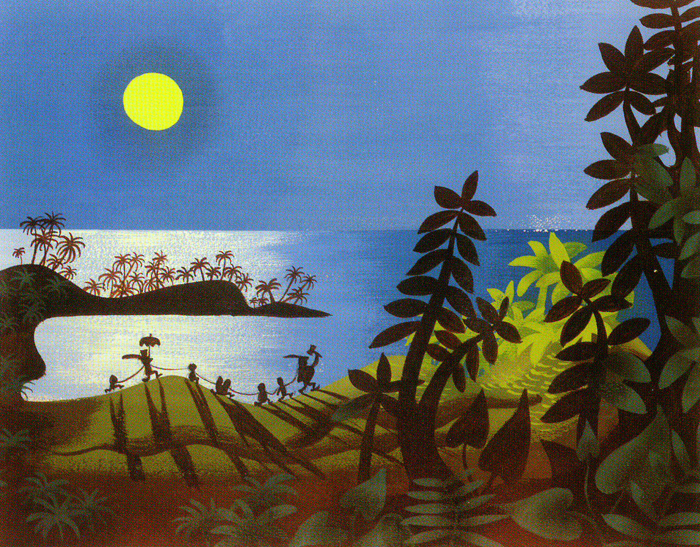John Canemaker wrote a
typically excellent piece on Charles Burchfield for Print. On his recommendation, after being stopped in my tracks by the bus kiosk ad, I visited the Whitney for “
Heat Waves in a Swamp: The Paintings of Charles Burchfield.”
It's an exhaustive exhibition,
de rigueur for today's blockbuster art economy, that leads you from interest to apathy to excitement.
While Canemaker discusses Burchfield's relationship to animation his article stops short of going into animation's relationship to Burchfield.
John's affinity for the painter is clear.
(above) Bridgehampton by John Canemaker
(above) Untitled (Landscape with Trees and Birds), 1925.
Currently on exhibit at the Alexandre Gallery, 41 E. 57th Street.
Burchfield's loose, almost abstract, landscapes are more of graphic recreation of a feeling than the fastidious landscapes of 19th Century. This is a style which is very "animate-able". It's visually appealing, quick to draw, and repeatable.
Traces of his work can be found in Mary Blair's work for Disney.
(above) By Mary Blair from
Peter Pan (linked from
Michael Sporn, scanned
(above) "Fireflies and Lightening" by Burchfield, in the Whitney Exhibit.
I know it heretical in animation, but I've always found Mary Blair's work teetering on kitsch. And this comparison helps explain that impulse.
Burchfield was one of America's best known artists in the first half of the century. He was the star of the MoMA's first one man exhibit, he had a very successful line of Christmas cards and feature articles in "Fortune", "Life" and other national magazines. It would be hard to believe that the Mary Blair wasn't aware of his work.
Many of the ideas in his paintings are evident in the Disney work. The contrast of dark foreground with open skies. Depth built through a chiaroscuro of color fading from saturation to white. Natural forms indicated through shape. The repeat of figures.
The Disney work polishes it until the shine is obvious. Again, the comparison to Bridgehampton is telling. Canemaker, like Burchfield, trusts the audience to commune with the artist. The Mary Blair designs, one cog in a mechanical assembly, never take that leap.
The show at the Whitney runs eight galleries. In the first, we're introduced to sketches. Mostly nightmarish stuff with sinister titles.
This opens into a room containing the work shown in his 1930 MoMA exhibition (much from his 1918 of his annus mirabilis). These are nice -some are particularly Mary Blair -but altogether not so impressive. It's clear the artist isn't a master of his trade, there's a lot of "fix ups" in the watercolor and he either doesn't trust negative space or can't control the pigment well enough to create it. You get the impression of stumbling on some great yard sale find, not an American master.
The next few galleries (with the exception of his very cool work as a wallpaper designer) cement this opinion.
But then
Wow.
In his notes the artist writes how he abandoned a version of this (above) painting,
The Coming of Spring, years earlier because he didn't have the tools to complete it.
After working up the masterpiece, he revisited the old in the style of his younger self.
The final gallery is full of paintings from this period from the 1950s through his death.
Walk quickly through the rest of the show to have the time and energy to spend here. The promise shown in those WWI era watercolors fully blooms in the final two decades of the artist's life. And, unfortunately there's very little animation like it.






No comments:
Post a Comment